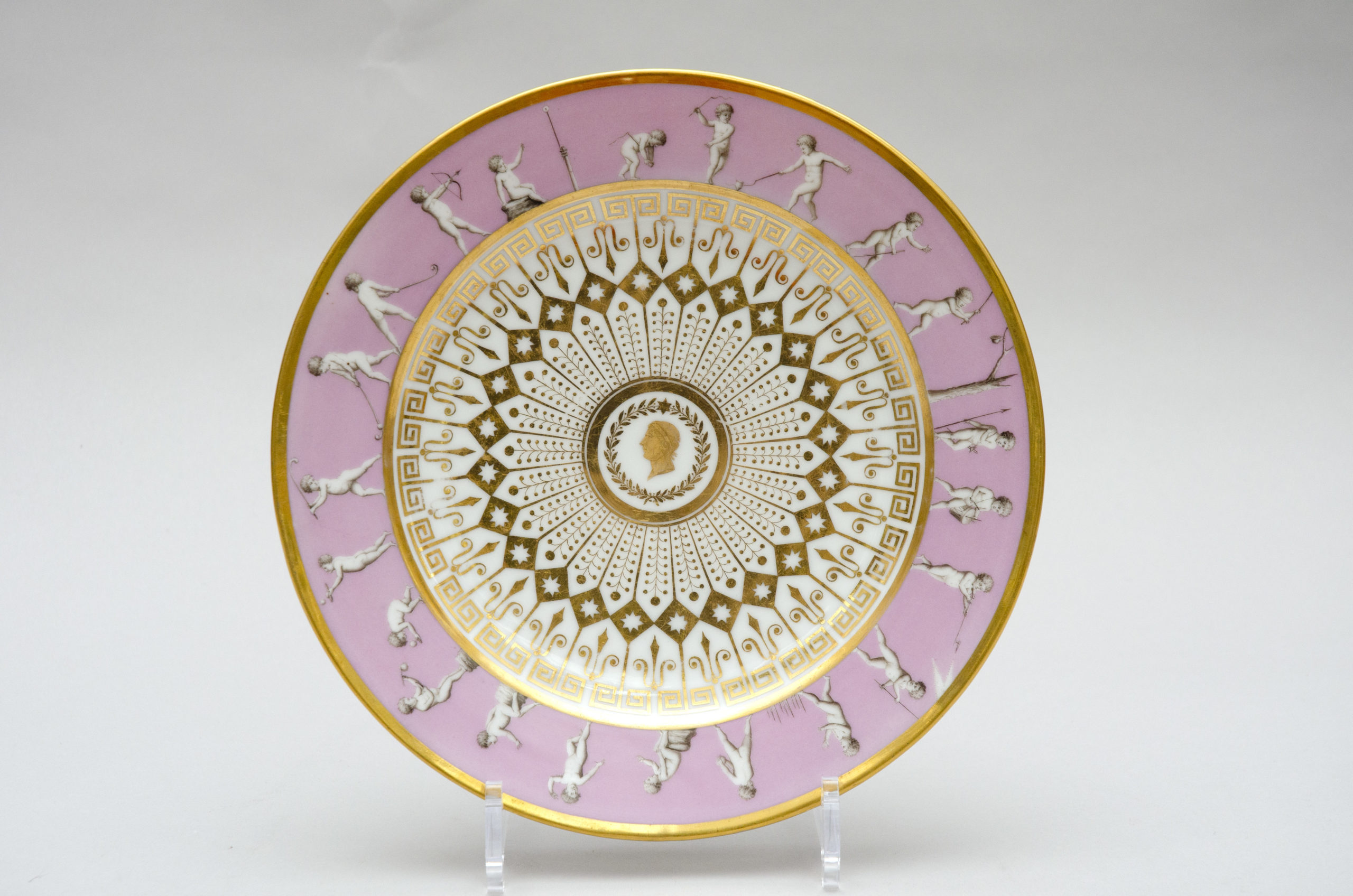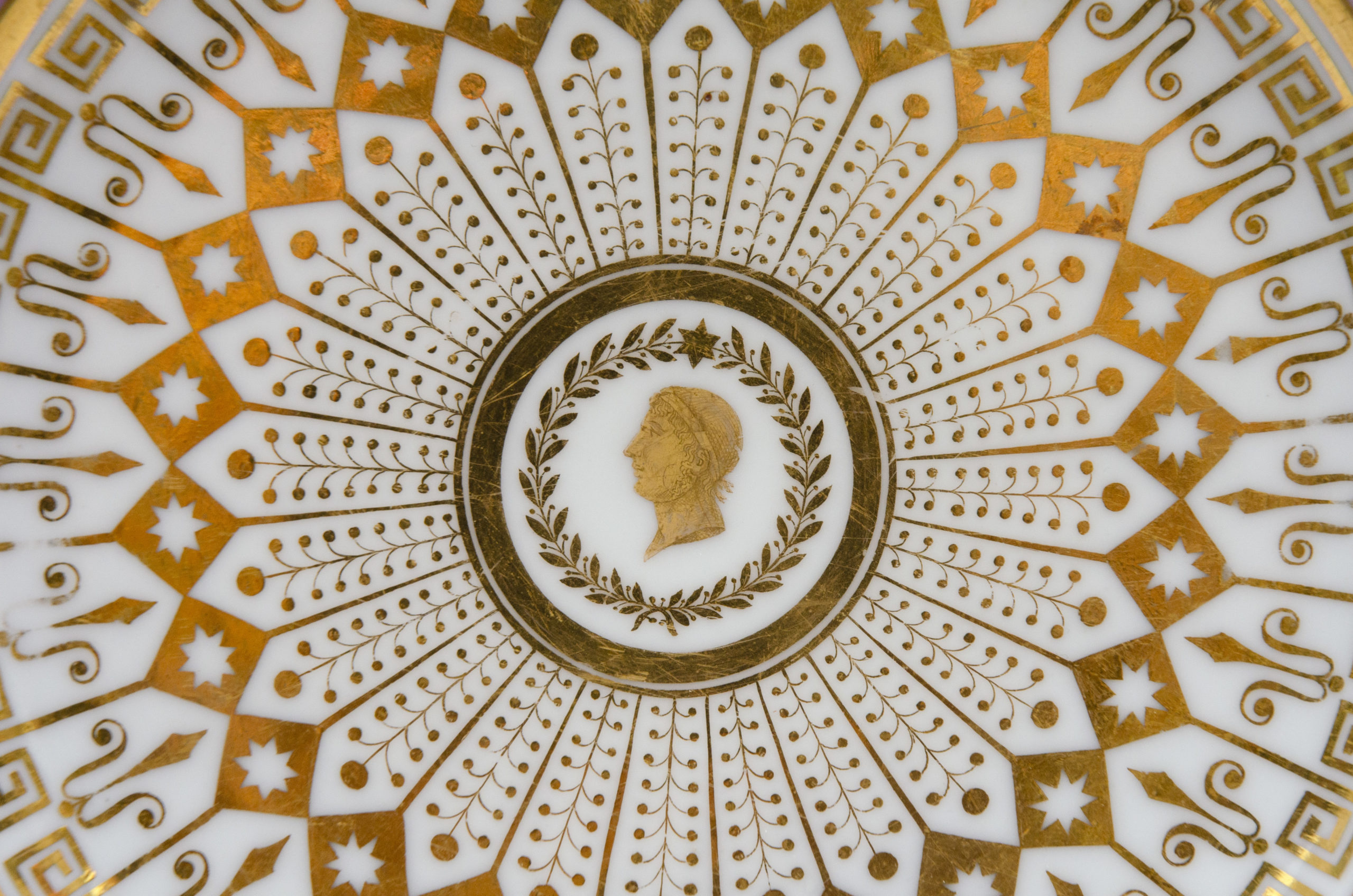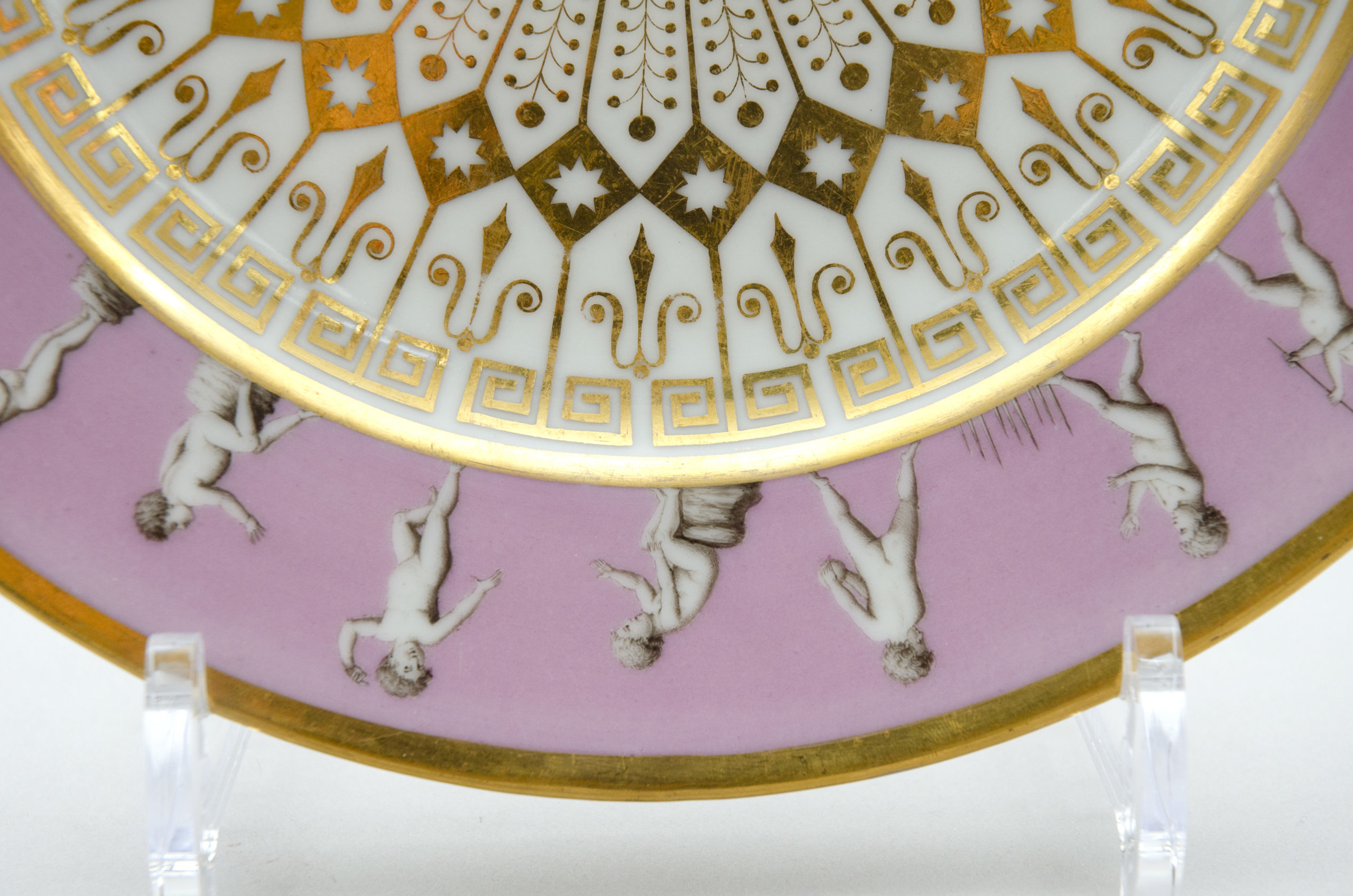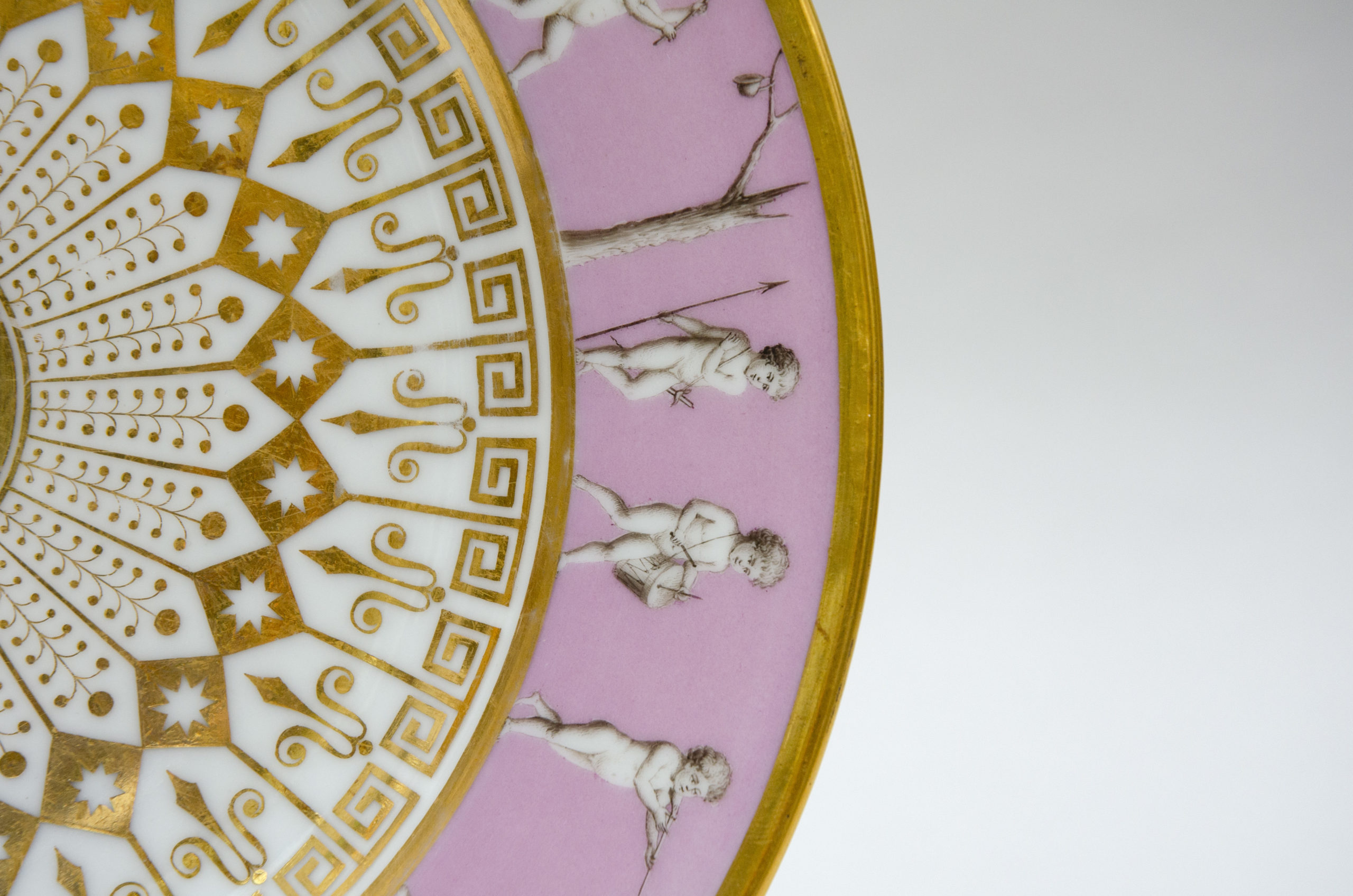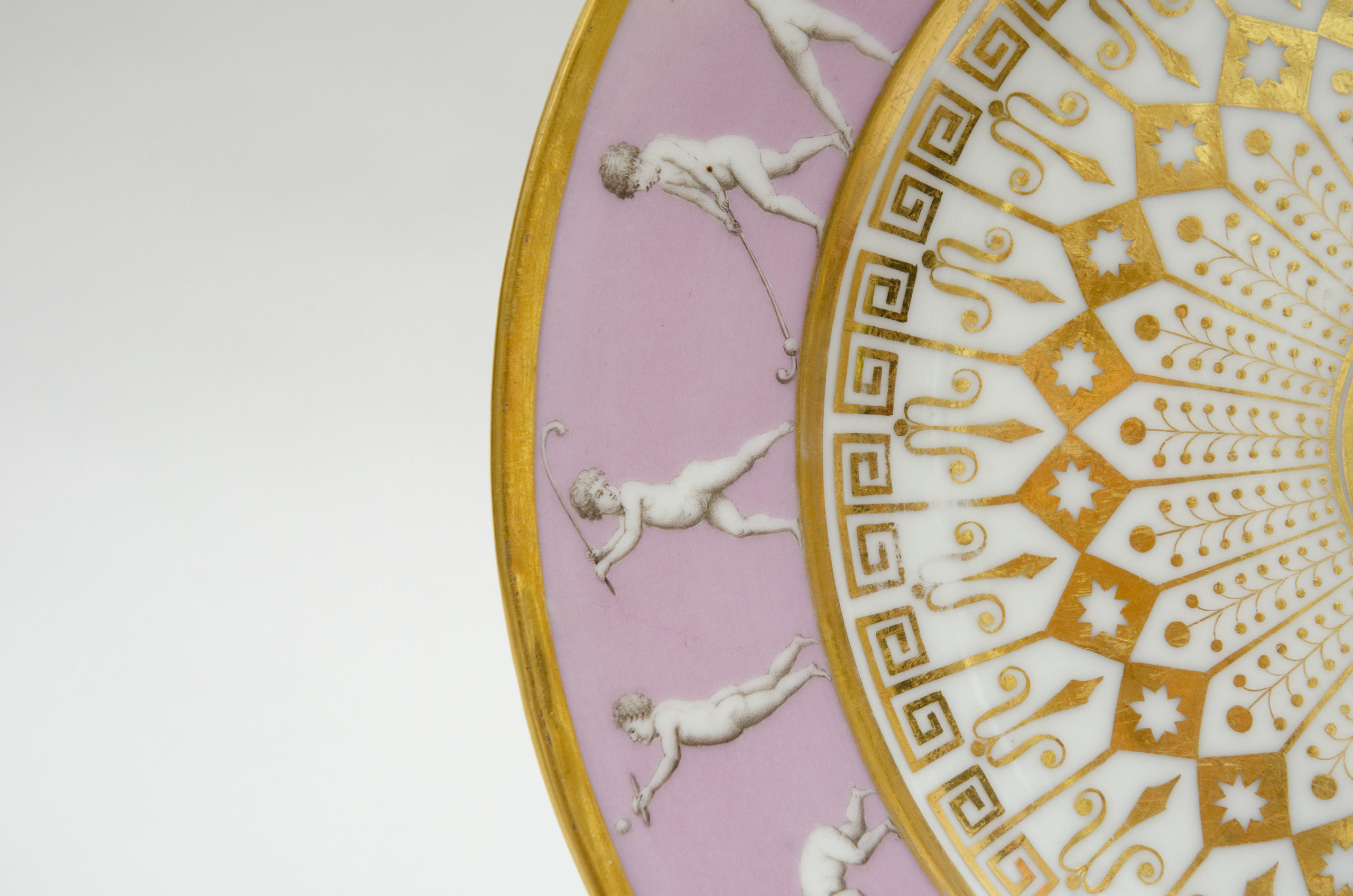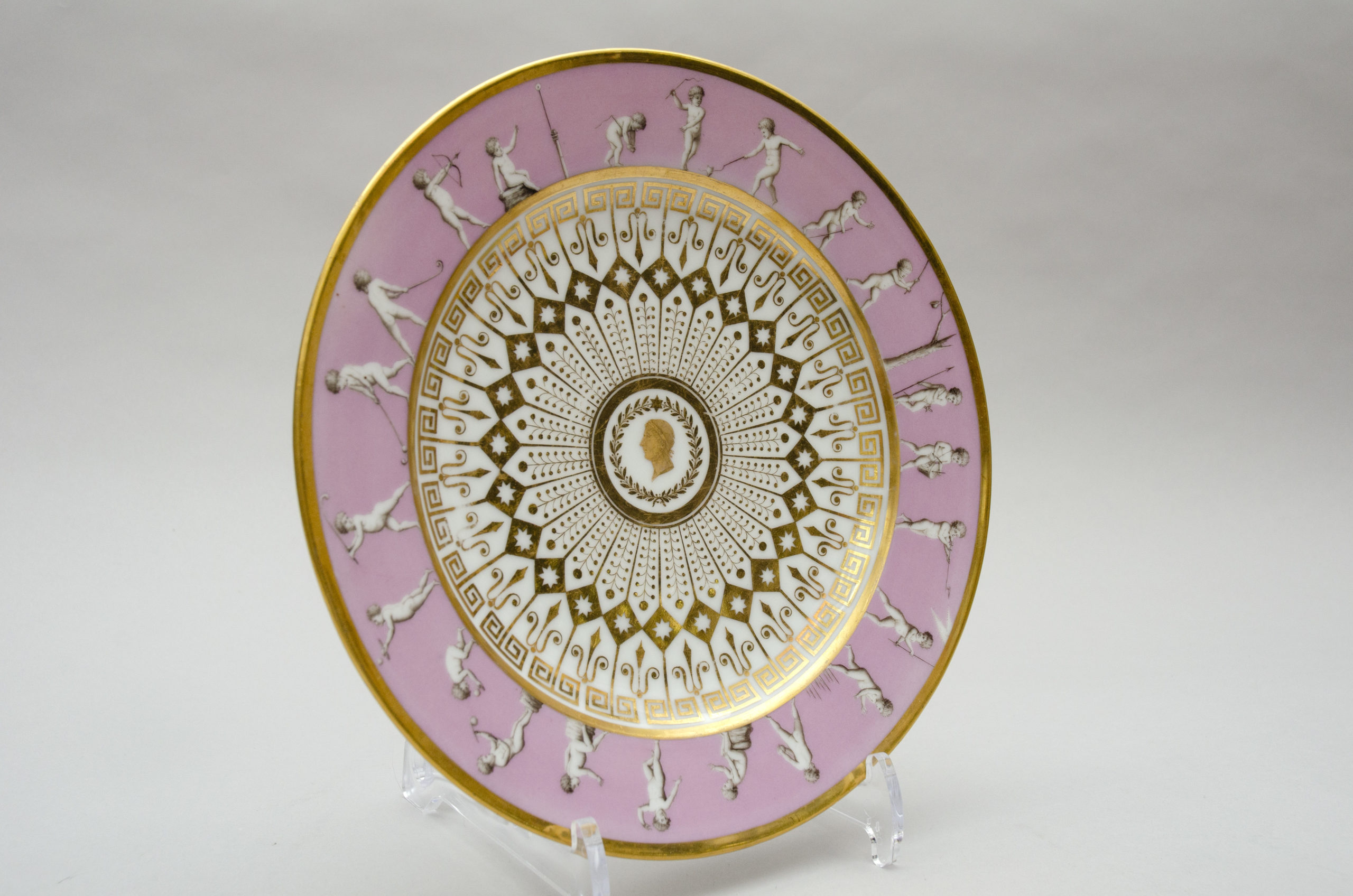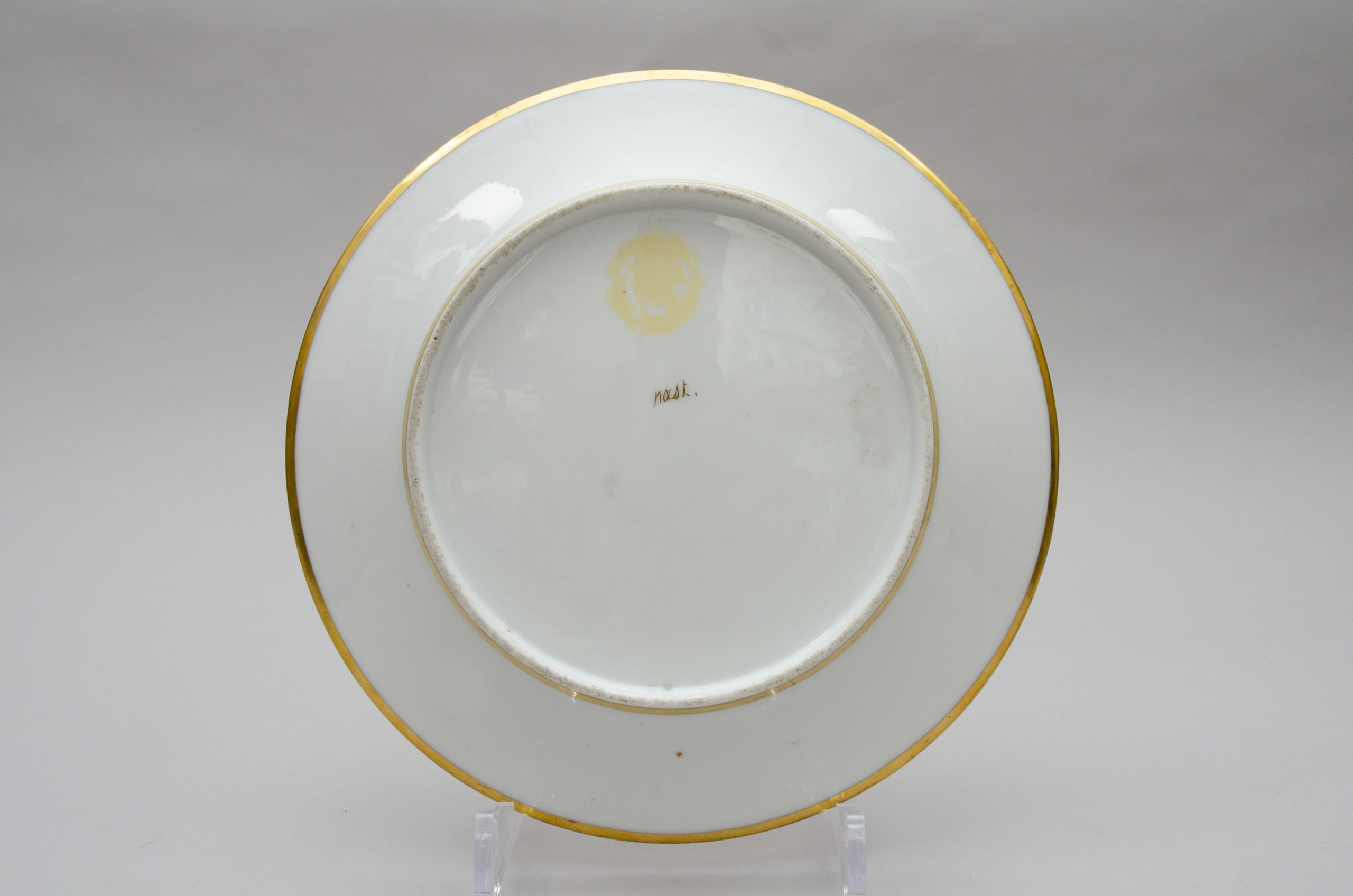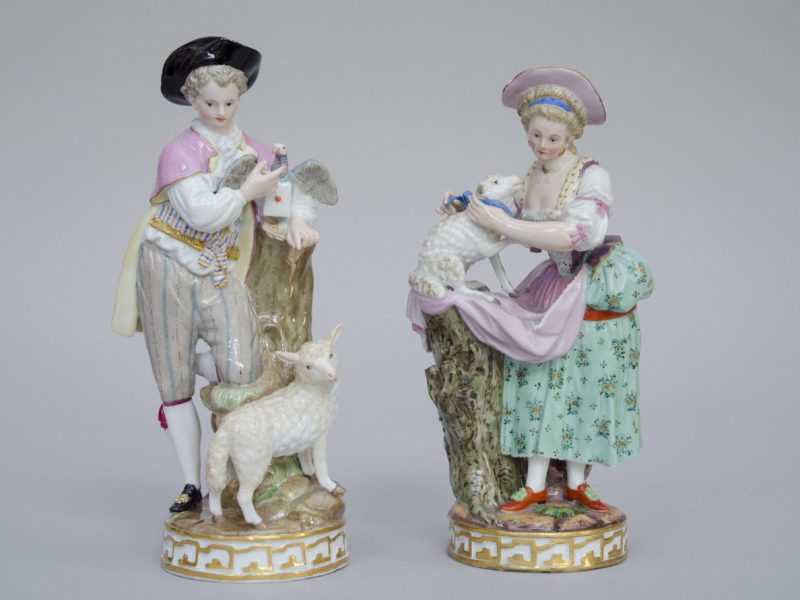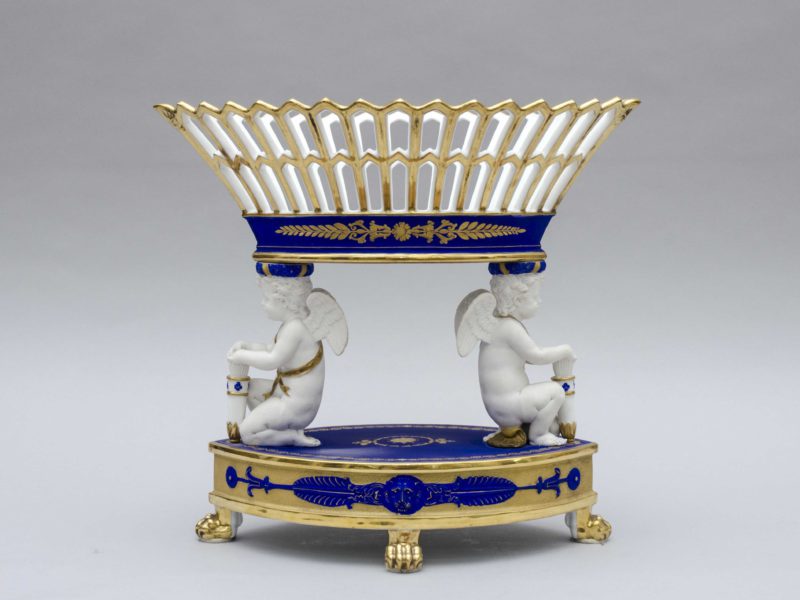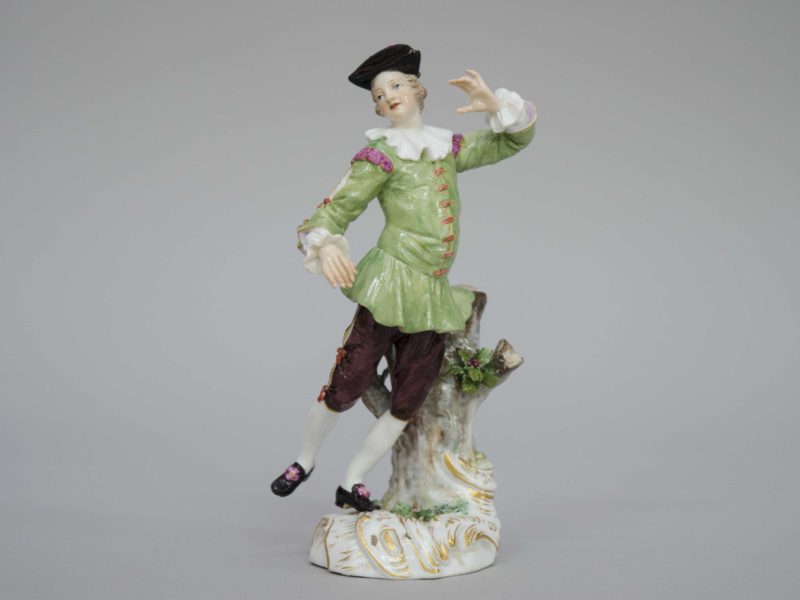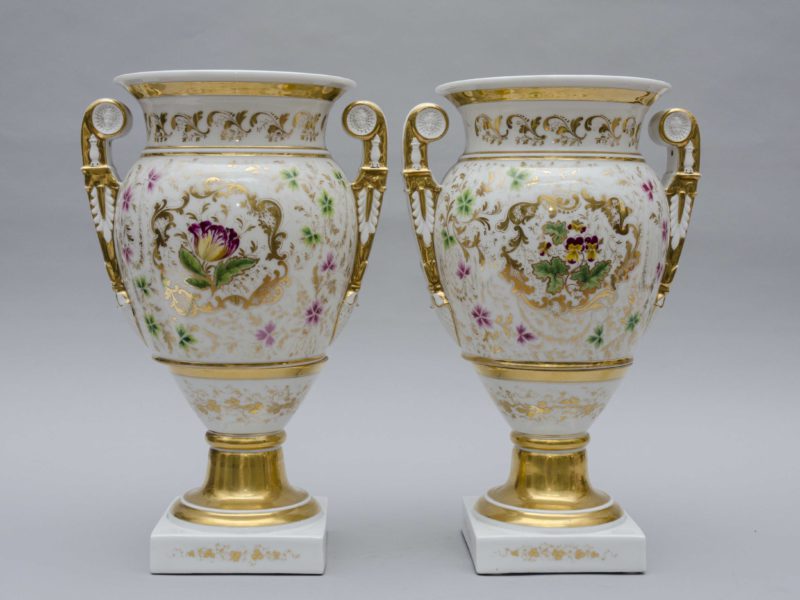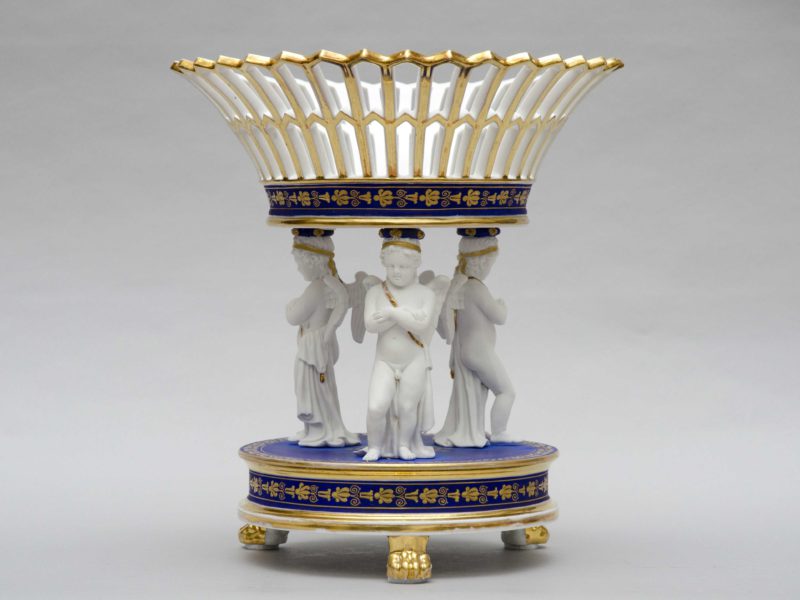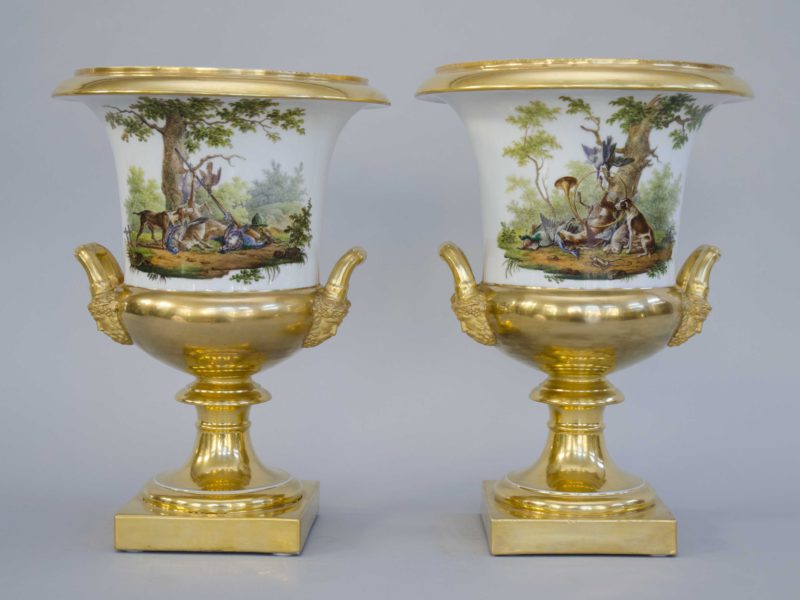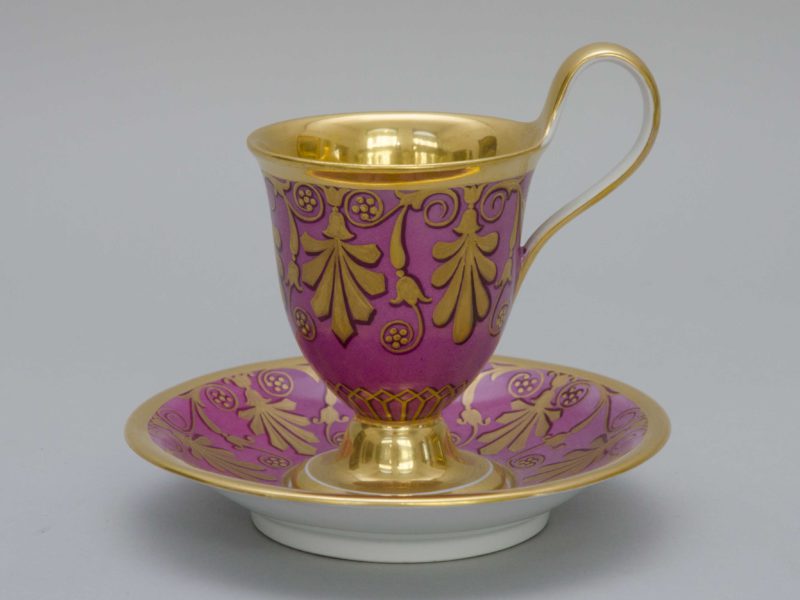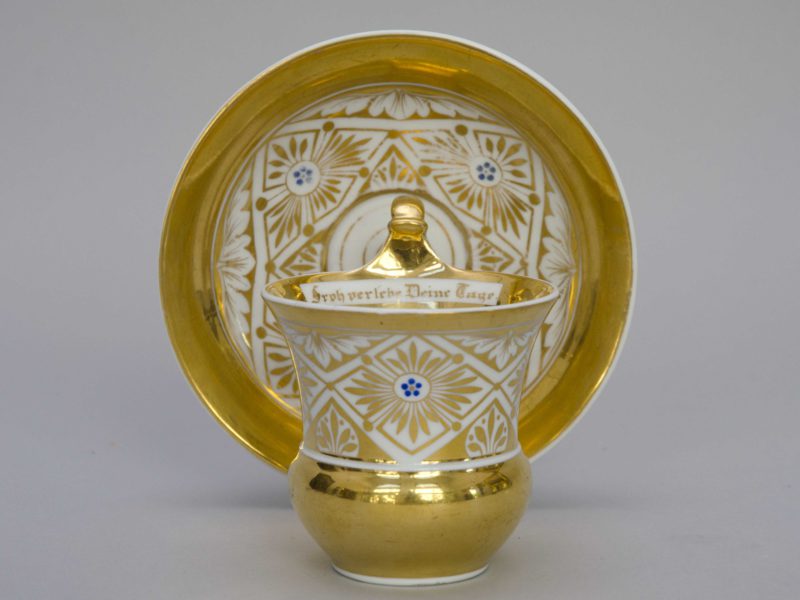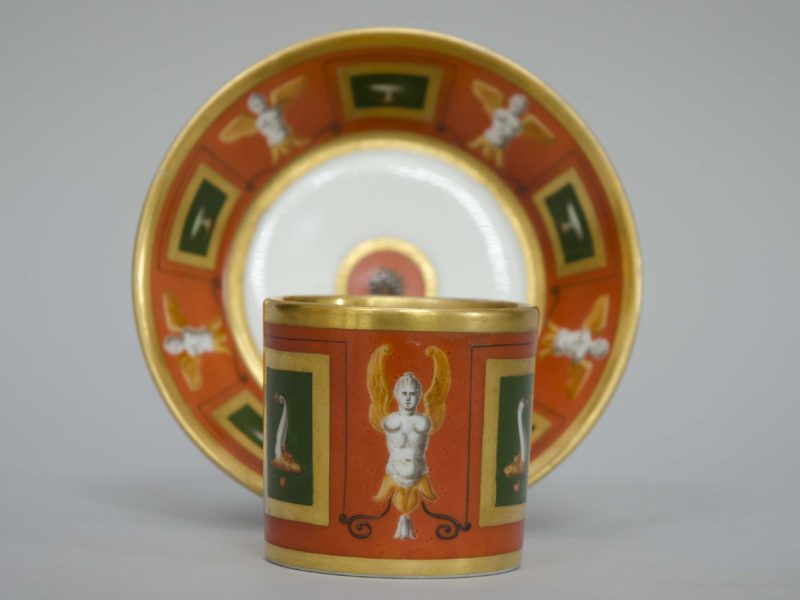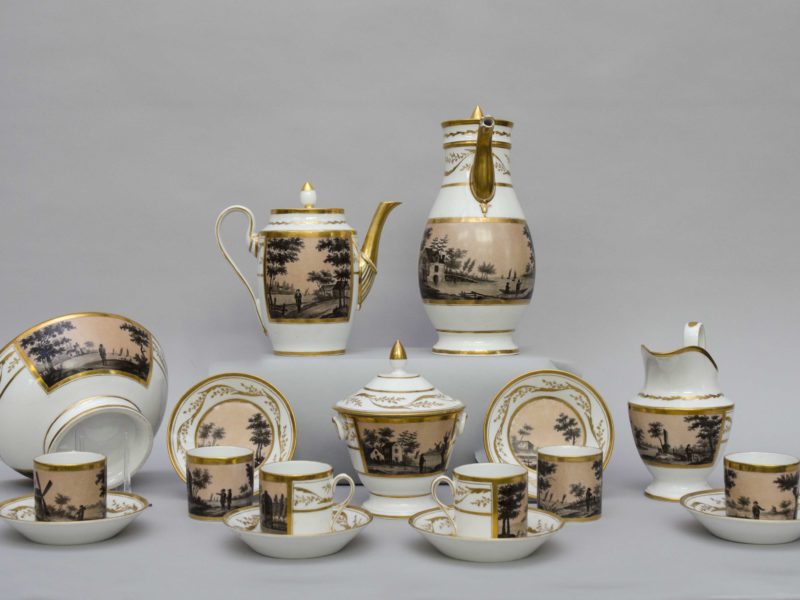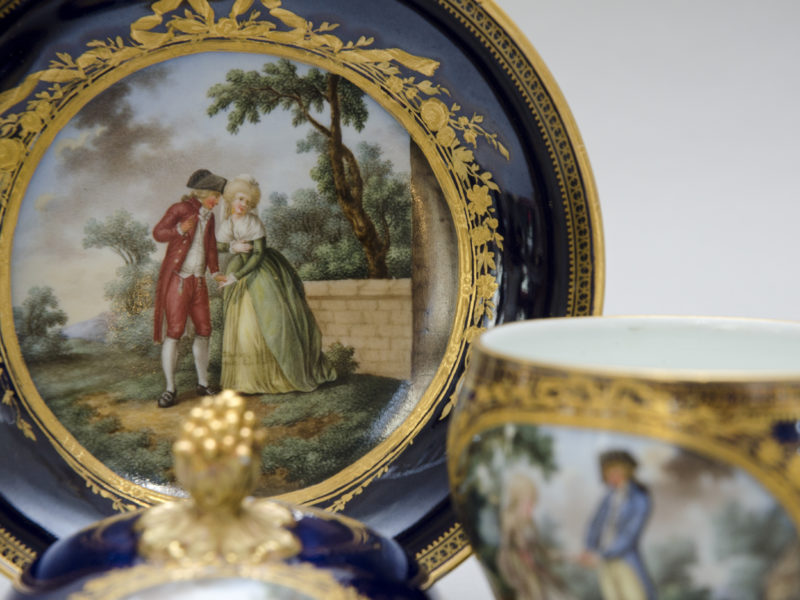
Rare “olympic” plate, Nast in Paris
Out of stock
Rare and elegant plate with a sports theme as putti play at all kinds of sports on the border of the plate, on a lovely pink colour ground. The middle of the plate is decorated in gold with a refined antique profile as a cameo and freezes of stars and Greek inspired ornaments. A laurel crown around the cameo profile. This refers to the first antique Olympic games. Marked for the prestigious manufactory of Nast.
Size: diameter of 23.5 cm
Paris, manufactory of Nast, Empire period.
Lit: Jean Nepomuceno Hermann Nast was born in 1754 in Austria. Arrived in Paris at the age of 20, he was hired by the Vincennes manufactory in 1780 and learned the craft of porcelain.
In 1783, he took over the small pottery of rue de Popincourt (founded by Lemaire in 1780). Designer, turner, moulder, burner and decorator, Nast knew how to do everything! In 1787 he moved his establishment rue des Amandiers (currently No. 70 Rue du Chemin Vert). Nast enjoys famousness deserved by his talent. Always striving to improve the quality of his works, the decorations are neat, the golds are of high quality and the bisque are very white and even white on blue in the imitation of Wedgwood at the end of the 18th century. When his wife died in 1811, he involved his sons, Henri and François, to his work. When he died in 1817, he left a prosperous factory to his sons. In 1819, the Nast manufactory won a gold medal for large vases (1,5m!) decorated with bas-relief, a clock and bisque columns. The same happened in 1823, 1827 and 1834. After 50 years of existence, the factory will be dissolved in 1835.
Out of stock
Contact us